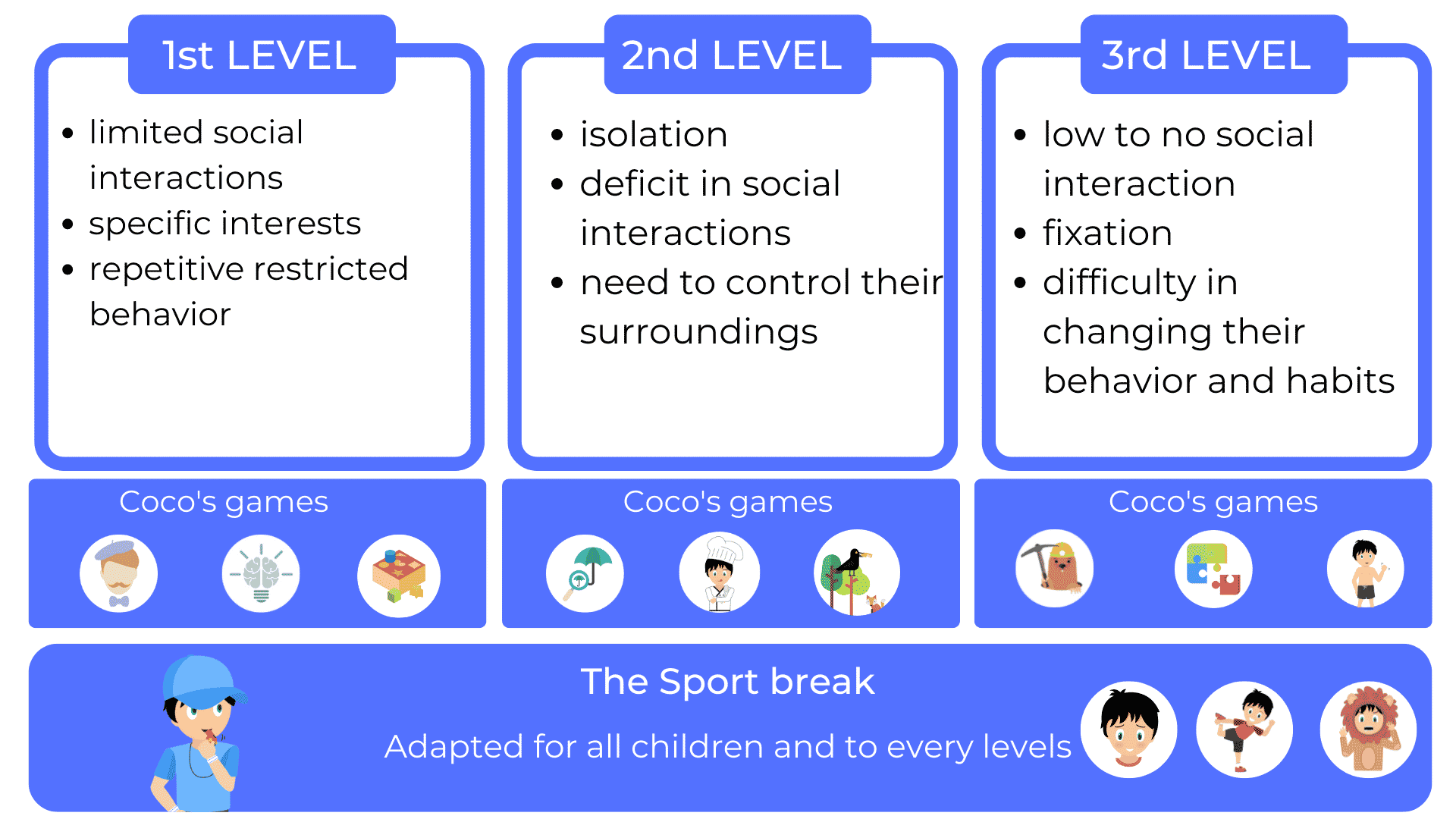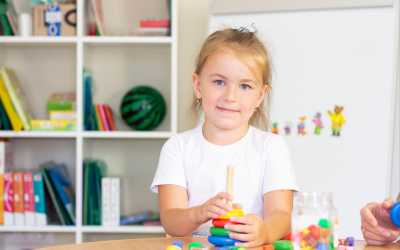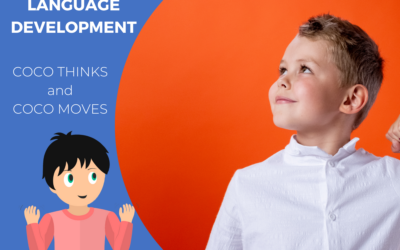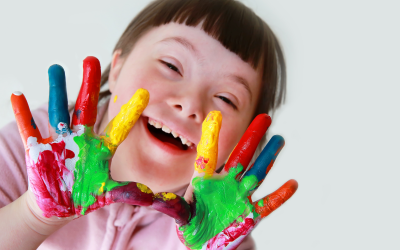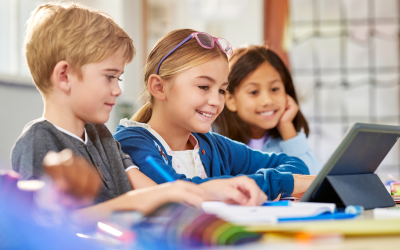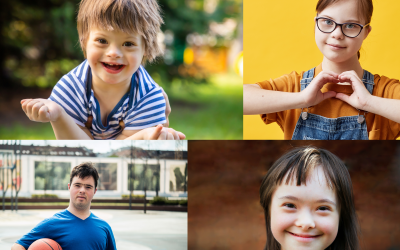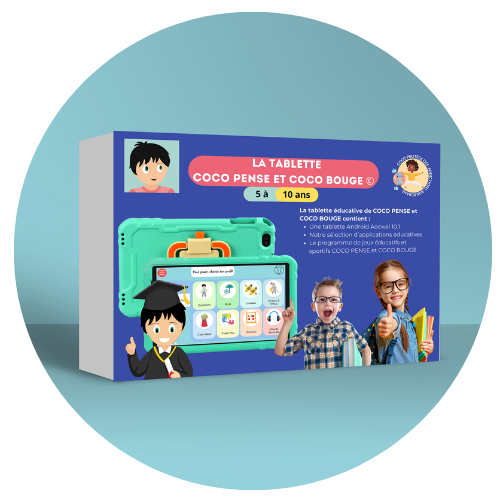Travelling with an autistic child can seem daunting, but with the right preparation and practical advice, you can create a successful and rewarding vacation for the whole family. In this article, we’ll present some useful tips for traveling with an autistic child, focusing on planning, communication, the use of technology and the creation of a suitable environment. These tips will help make your trip more enjoyable and ensure your child’s well-being.
Planning your trip
Planning is essential when it comes to traveling with an autistic child. Here are a few practical tips to help you plan your trip:
- Choose a suitable destination: Find out which destinations offer services and infrastructures adapted to autistic children. Some locations offer special programs for children with special needs, which can make the trip more enjoyable for the whole family.
- Prepare your child in advance: Inform your child about the details of the trip, such as travel time, mode of transportation and planned activities. Use visual aids, such as photos or pictograms, to make it easier for him to understand and give him a sense of security.
- Anticipate your child’s specific needs: Plan regular breaks, bring familiar snacks and drinks, and make sure you have enough medication or medical equipment needed for your child. This will help you cope with unexpected situations and reduce stress.
Effective communication
Communication is essential to ensure a successful trip with an autistic child. Here are a few tips for effective communication:
- Use visual aids: Visual aids, such as calendars, timetables or to-do lists, can help your child understand and anticipate the various stages of the trip. This gives her structure and makes her feel more secure.
- Use pictograms or applications: Pictograms and apps specially designed for autistic children can make it easier to communicate and understand instructions. These visual tools can be used to express needs, ask for help or communicate preferences.
- Provide an alternative means of communication: If your child has difficulty communicating verbally, make sure you have an alternative means of communication, such as a communication booklet, pictograms or assisted communication applications. This will enable your child to express himself and communicate his needs during the trip.
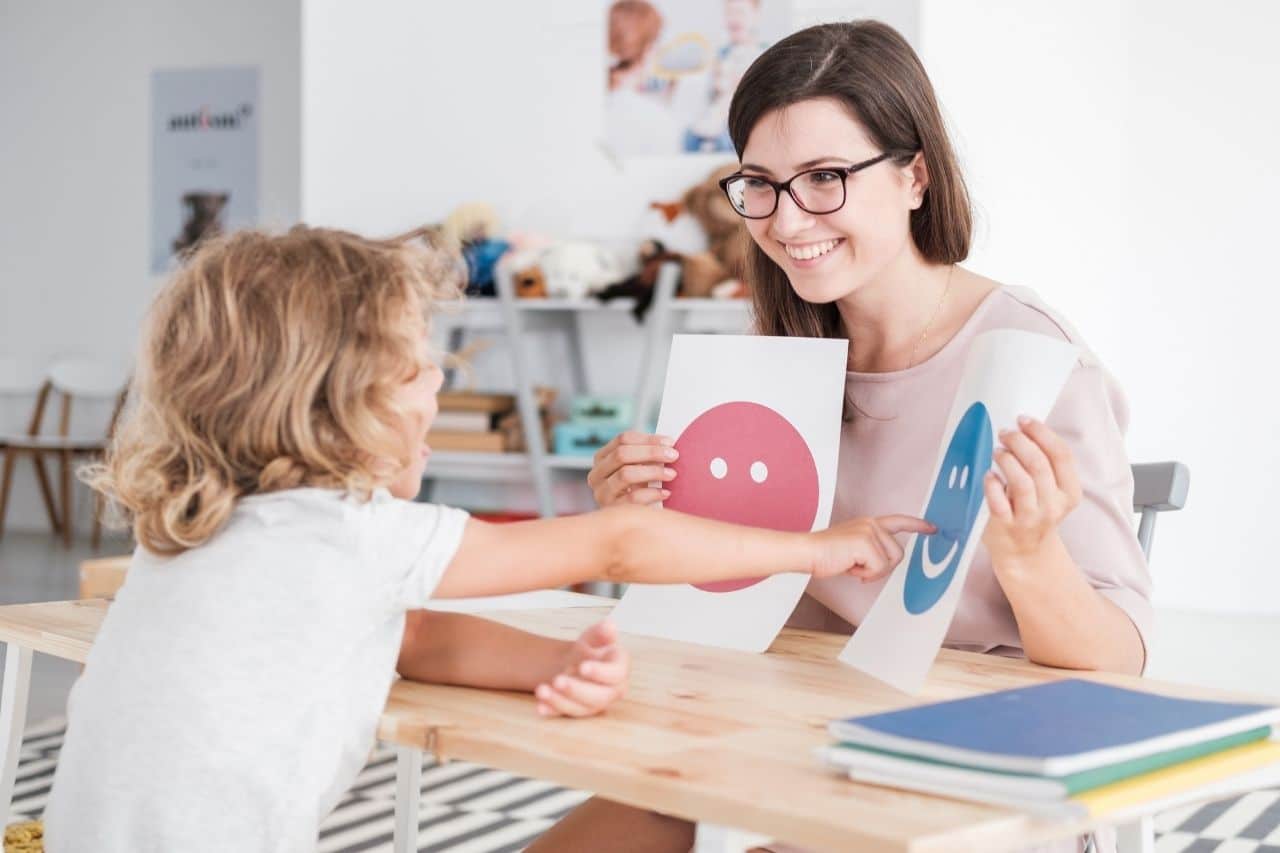
Using technology to travel
Technology can be a great help when it comes to traveling with an autistic child. Here are a few examples of useful technological tools:
- Memory and organization apps: Use mobile apps specially designed to help autistic children remember tasks, organize their schedules and manage their routines. These applications can be used to create visual reminders, to-do lists and personalized schedules.
- Distraction and relaxation tools: Download relaxation or entertainment applications adapted to autistic children. These applications can include calm games, soothing stories or breathing exercises to help your child relax during moments of stress or waiting.
- Use of digital tools in speech therapy: If your child attends speech therapy sessions, find out about the software or applications used by speech therapists for memory and language rehabilitation. Some digital tools can be used during the trip to continue rehabilitation exercises.
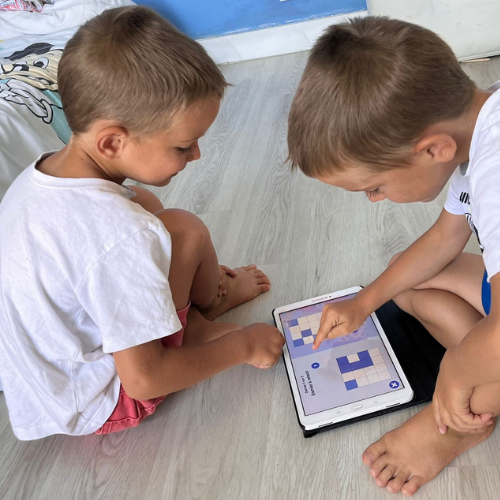
Creating a familiar environment
Creating a familiar environment during the trip can help your autistic child feel safe and adapt better. Here are some tips for creating a familiar environment:
- Bring familiar objects: Encourage your child to bring along familiar objects, such as favorite toys, a blanket or a pillow. These familiar objects can provide comfort and reduce the anxiety associated with a new environment.
- Respect routines and rituals: Try to maintain your child’s usual routines and rituals as much as possible. This can include regularly scheduled meals, favorite activities before bedtime or moments of calm and relaxation.
- Create quiet spaces: When traveling, plan quiet times and places where your child can retreat to relax and unwind. It could be a quiet hotel room, a peaceful corner in a park or a dedicated space in the vehicle.
Adapted activities and necessary breaks
When planning activities during your trip, take into account the specific needs of your autistic child. Here are some suggestions for suitable activities:
- Look for adapted attractions or activities: Find out which local attractions offer activities suitable for children with special needs. This can include sensory museums, theme parks with quiet areas or special excursions.
- Plan regular breaks: Children with autism can tire quickly when traveling. Plan regular breaks to allow your child to rest, relax and recharge. This can include breaks in rest areas, parks or quiet places.
- Involve your child in planning activities: Let your child take part in planning activities by presenting him/her with different options and taking his/her preferences into account. This will give him a sense of control and involvement, which can make activities more enjoyable.
Travelling with an autistic child can be an enriching experience for the whole family. By following these practical tips, you can plan a successful trip, create a suitable environment, use available technologies and enjoy moments of relaxation and pleasure with your family. Don’t forget to adapt your plans to your child’s specific needs, and take the time to find out about the services and resources available in the destinations you visit. Bon voyage!
COCO THINKS and COCO MOVES, educational and sports games
Today, COCO is an application used by autistic children either at home or with a healthcare professional, who may be a speech therapist, occupational therapist, psychologist or psychomotor therapist. All professionals wishing to subscribe to Coco can benefit from a web-based performance tracking platform. It is therefore possible to see the evolution and improvement of people with autism, and thus personalize their care.
Coco goes everywhere with you, because the application doesn’t need Wi-Fi to work, only for updates.
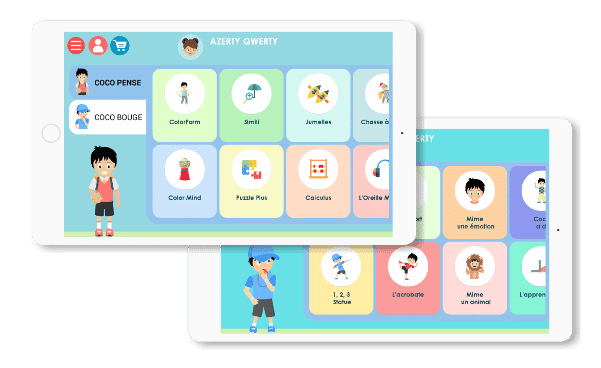
SPORTS BREAKS BENEFIT AUTISTIC CHILDREN
In COCO, you’ll also find physical activities. Every 15 minutes of screen time, the application stops and offers children physical games.
This sports break has many advantages for children, especially those with autism.
Screen use is very useful and loved by children, but prolonged use can become negative. With Coco, children can take a dynamic break, learning to let go of the tablet and engage in physical activity while having fun at the same time.
All our physical activities are designed with children in mind. With balance and dance games, children learn to know their bodies and adapt to their environment. For children with autism, this can be very useful for augmenting known motor patterns and for gaining a better sense of self (especially when there is hypo or hypersensitivity).
In Coco, there’s also the “mime an emotion” game, where the child has to reproduce the emotion shown on screen by Coco. Children can first learn to name emotions, to recognize them in themselves and then in others. What’s more, there’s an audio description in the game that explains the emotion and what you feel in your body.
In our educational application COCO, you can also learn to recognize your emotions with the game “Mime emotions”, in the COCO MOVES section. By clicking on the question mark, you will be able to learn the different emotions in order to better recognize them.
This game to mime emotions is also accessible as a break, every 15 minutes of screen. Every 15 minutes, children are asked to choose a physical activity for an active break. And you can also mime the emotions at that time!
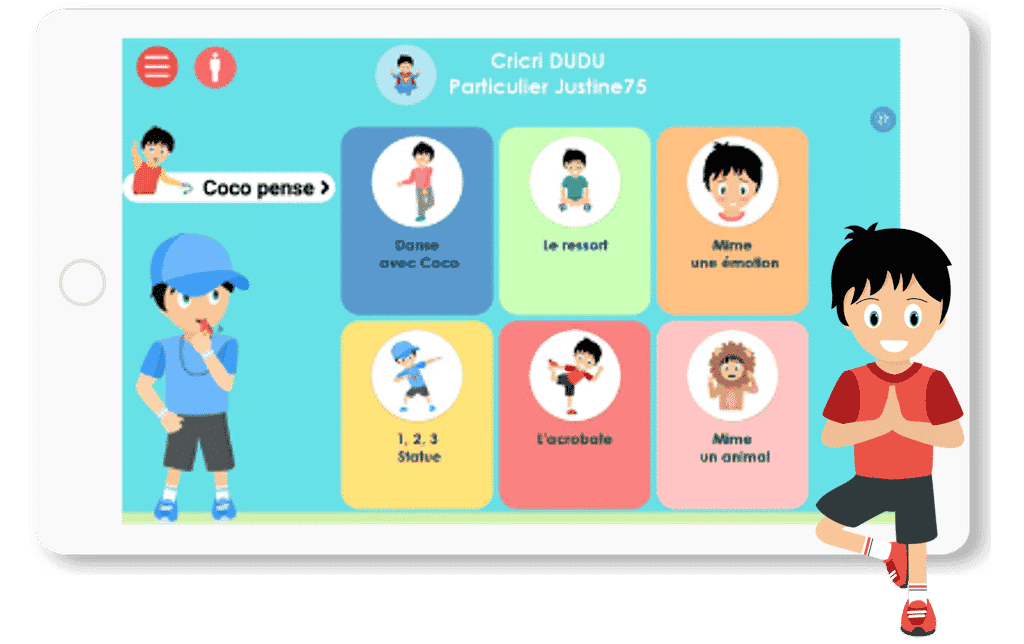
In our educational application COCO, you can also learn to recognize your emotions with the game “Mime emotions”, in the COCO MOVES section. By clicking on the question mark, you will be able to learn the different emotions in order to better recognize them.
This game to mime emotions is also accessible as a break, every 15 minutes of screen. Every 15 minutes, children are asked to choose a physical activity for an active break. And you can also mime the emotions at that time!


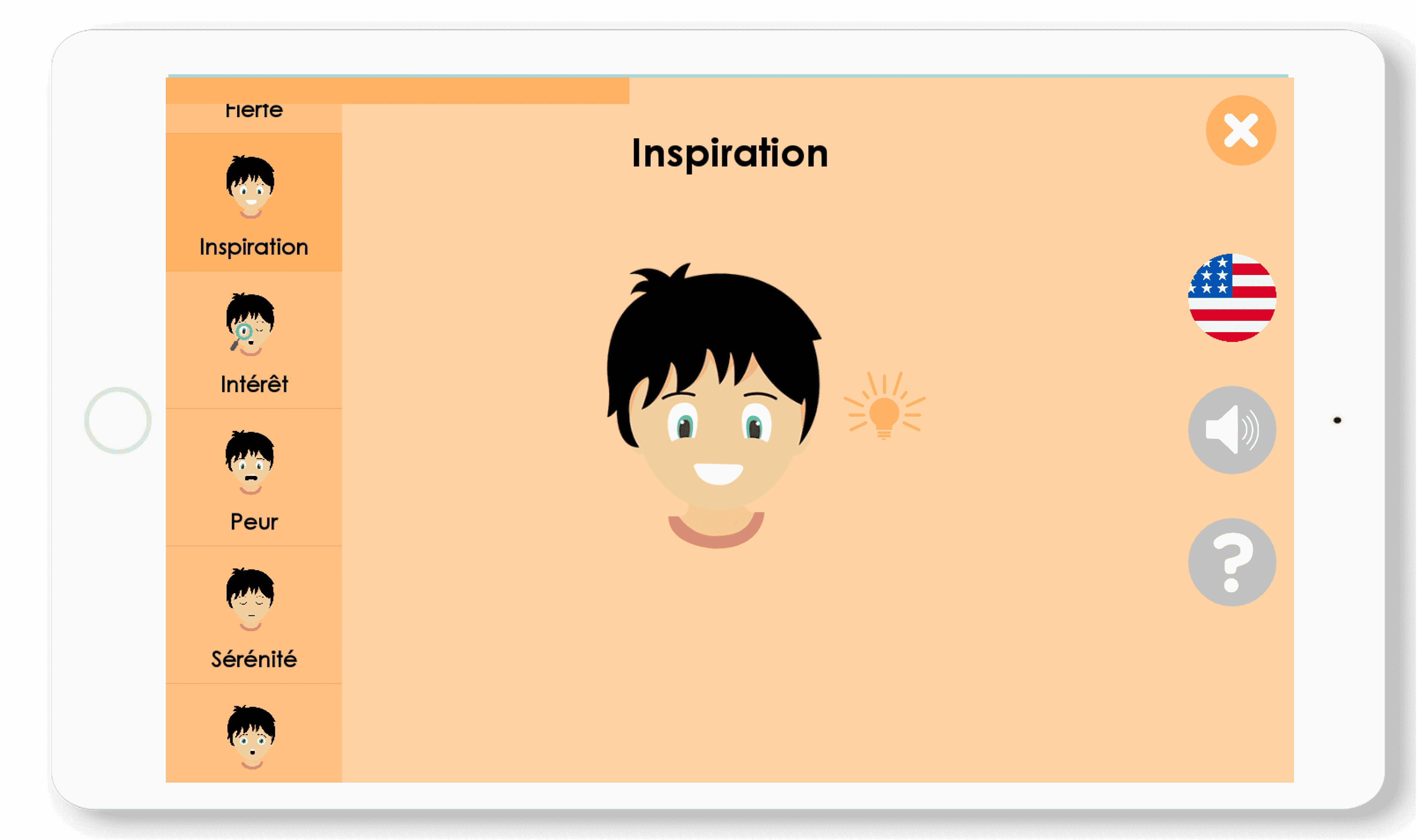
THE SURPRISE
Surprise means that you are surprised by a moment, a person or an object. Like an unexpected gift!
When you are surprised, you open your mouth and eyes wide.
THE CONFUSION
Confusion is being lost in our ideas because of an event for example. It is possible to make a mistake about the name of someone or something.
To mimic confusion, open your eyes wide, make a big “Hoo” with your mouth and raise your eyebrows.
INSPIRATION
Inspiration is the ability of our mind to imagine and create things like drawings, poems, stories.
For inspiration, we’ll squint our eyes, scratch our heads lightly with a smile and pretend to paint, write or draw.



THE AFFECTION
Affection means to be touched, to have positive thoughts for a friend, family member or pet.
Here, we smile, we think about the good times, we can hug, kiss, tell a friend that we like him or her.
.
THE BOREDOM
Boredom is present when we are in a situation that does not interest us. You don’t want to listen to the person in front of you or you don’t want to do anything.
For boredom, we’ll blow hard, look up and look around.
THE PAIN
Pain is an unpleasant sensation that can hurt. It can hurt physically with an accident. Pain can also be a feeling of missing someone or something or sadness.
To express the pain we raise the eyebrows upwards, we bend the eyes and we make a grimace with the face.
Other articles that might interest you:
Supporting children with autism
Dynseo proposesSUPPORTING CHILDREN WITH AUTISM with COCO THINKS AND COCO MOVESDynseo and its team are very much...
Supporting DYS children with COCO THINKS and COCO MOVES
Dynseo proposesDYS disorders with COCO THINKS and COCO MOVESOur educational and pedagogical games program COCO THINKS...
Language development
Children communicate from birth with movements, crying, looking at each other or with smiles. After only a few months,...
Supporting children with Down Syndrome with Coco
Dynseo proposesDOWN SYNDROME with COCODown syndrome is a non-hereditary chromosomal abnormality that leads to the...
Supporting people after a stroke
Dynseo proposesStroke with CLINT, your brain training coachThe Dynseo team is very involved in helping people who have...
Supporting someone with Alzheimer’s
In this guide, we will detail how SCARLETT can be used for supporting someone with Alzheimer's. SCARLETT is a...
10 myths about the human brain you didn’t know
The brain is an incredible muscle, however there are many things we do not know, and what we do know is not always...
Using Digital Tools to Support Students with Special Educational Needs
Special Educational Needs (SEN) encompass a wide range of learning difficulties and disabilities that can hinder a...
Down Syndrome and Communication: Facilitating Interaction with Visual and Interactive Supports
When we think about Down syndrome, we often recognize it as a genetic condition that affects physical and cognitive...
How to Track Progress in People with Down Syndrome Using Digital Tools
Down syndrome, a genetic condition caused by the presence of an extra chromosome 21, affects approximately 1 in every...


